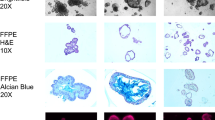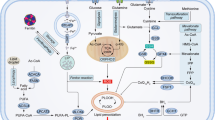Abstract
Current medication for gastric cancer patients has a low success rate and the patients develop rapid tolerance to these drugs. Therefore, the development of new regimens is desired. In this study, we determined that Notch-signaling-related genes were overexpressed and activated in gastric cancer patients and gastric cancer cell lines. According to recent studies, γ-secretase inhibitors (GSIs), which function as Notch signaling inhibitors, could be used as therapeutic drugs in cancer. We demonstrated that GSI I (cbz-IL-CHO) is the most effective GSI in gastric cancer cells. We also determined the cell survival signaling-related proteins that were affected by GSI I. The levels of phosphorylated AKT were significantly decreased upon GSI I treatment, and constitutively activated myristoylated AKT completely blocked GSI I-induced apoptosis and cell survival, suggesting that inhibition of AKT signaling is critical for GSI I-mediated effects in gastric cancer cells. In order to maximize the effects and safety of GSI I, a combination treatment with GSI I and 5-FU was performed. Inhibition of gastric cancer cell proliferation with the combination treatment was significantly better than that with the single treatment. All phosphorylated forms of AKT, p44/42, JNK, and p38 were drastically changed by the combination treatment. Orthotopically transplanted gastric tumor burdens in mice were reduced using the combined treatment. The outcomes of this study clearly demonstrated the therapeutic potential of GSI I in gastric cancer, as well as the greater efficacy of the combined treatment of GSI I with 5-FU. Therefore, we suggest that further clinical trials examining the potential of combined GSI I and 5-FU treatment in gastric cancer patients be undertaken.






Similar content being viewed by others
Abbreviations
- GSI:
-
γ-Secretase inhibitor
- AGC:
-
Advanced gastric cancer
- T-ALL:
-
T cell acute lymphoblastic leukemia
- NICD1:
-
Notch-1 intracellular domain
- NICD2:
-
Notch-2 intracellular domain
- Myr-AKT:
-
Myristoylated AKT (constitutively active form of AKT)
- LRP:
-
Low-density lipoprotein receptor-related protein
- EMT:
-
Epithelial-mesenchymal transition
References
De Vita F et al (2012) Current status of targeted therapies in advanced gastric cancer. Expert Opin Ther Targets 16(Suppl 2):S29–S34
Satoh T, Sakata Y (2012) S-1 for the treatment of gastrointestinal cancer. Expert Opin Pharmacother 13(13):1943–1959
Ajani JA et al (2007) Clinical benefit with docetaxel plus fluorouracil and cisplatin compared with cisplatin and fluorouracil in a phase III trial of advanced gastric or gastroesophageal cancer adenocarcinoma: the V-325 study group. J Clin Oncol 25(22):3205
Dreesen O, Brivanlou AH (2007) Signaling pathways in cancer and embryonic stem cells. Stem Cell Rev 3(1):7–17
Knowlton AA (2006) NFkappaB, heat shock proteins, HSF-1, and inflammation. Cardiovasc Res 69(1):7–8
Mivechi NF et al (1994) Analysis of HSF-1 phosphorylation in A549 cells treated with a variety of stresses. Int J Hyperth 10(3):371–379
Dickson BC et al (2007) High-level JAG1 mRNA and protein predict poor outcome in breast cancer. Mod Pathol 20(6):685–693
Park JT et al (2006) Notch3 gene amplification in ovarian cancer. Cancer Res 66(12):6312–6318
O’Neil J et al (2006) Activating notch1 mutations in mouse models of T-ALL. Blood 107(2):781–785
Shih I-M, Wang T-L (2007) Notch signaling, γ-secretase inhibitors, and cancer therapy. Cancer Res 67(5):1879–1882
Curry CL et al (2005) Gamma secretase inhibitor blocks Notch activation and induces apoptosis in Kaposi’s sarcoma tumor cells. Oncogene 24(42):6333–6344
Zhang Y et al (2001) Heat shock factor-4 (HSF-4a) is a repressor of HSF-1 mediated transcription. J Cell Biochem 82(4):692–703
Wong GTMD, Poulet FM, Zhang Q, Josien H, Bara T, Engstrom L, Pinzon-Ortiz M, Fine JS, Lee HJ, Zhang L, Higgins GA, Parker EM (2004) Chronic treatment with the gamma-secretase inhibitor LY-411,575 inhibits beta-amyloid peptide production and alters lymphopoiesis and intestinal cell differentiation. J Biol Chem 279:12876–12882
Vaisman N, Evgen’ev MB, Golubovskii MD (2012) [Parallelism and paradoxes on viability and the life span of two loss-of-function mutations: heat shock protein transcriptional regulator hsf (1) and l (2) gl tumor suppressor in D. melanogaster]. Izvestiia Akademii Nauk Seriia biologicheskaia/Rossiiskaia Akademiia Nauk 1:27–34
Kim SJ et al (2014) Up-regulation of neogenin-1 increases cell proliferation and motility in gastric cancer. Oncotarget 5(10):3386–3398
Kim SJ et al (2012) MicroRNA let-7a suppresses breast cancer cell migration and invasion through downregulation of C-C chemokine receptor type 7. Breast Cancer Res 14(1):R14
Kim SJ et al (2013) Galectin-7 is epigenetically-regulated tumor suppressor in gastric cancer. Oncotarget 4(9):1461
Lee HW, Jang KS, Chun KH (2014) Celastrol inhibits gastric cancer growth by induction of apoptosis and autophagy. BMB Rep 47(12):697
Cheong TC, Shin JY, Chun KH (2010) Silencing of galectin-3 changes the gene expression and augments the sensitivity of gastric cancer cells to chemotherapeutic agents. Cancer Sci 101(1):94–102
Choi SW et al (2015) Glucose deprivation triggers protein kinase C-dependent beta-catenin proteasomal degradation. J Biol Chem 290(15):9863–9873
Ahn YH et al (2012) STAT3 silencing enhances the efficacy of the HSV.tk suicide gene in gastrointestinal cancer therapy. Clin Exp Metastasis 29(4):359–369
Kim SJ et al (2014) Ablation of galectin-3 induces p27(KIP1)-dependent premature senescence without oncogenic stress. Cell Death Differ 21(11):1769–1779
Wang YG et al (2012) Galectin-3 increases the motility of mouse melanoma cells by regulating matrix metalloproteinase-1 expression. Exp Mol Med 44(6):387–393
Cho Y et al (2015) Cleaved CD44 intracellular domain supports activation of stemness factors and promotes tumorigenesis of breast cancer. Oncotarget 6(11):8709–8721
Baek JH et al (2014) Galectin-3 activates PPARgamma and supports white adipose tissue formation and high-fat diet-induced obesity. Endocrinology 156(1):147–156
Kim SJ et al (2011) Development of microRNA-145 for therapeutic application in breast cancer. J Control Release 155(3):427–434
Ko A et al (2012) Acceleration of gastric tumorigenesis through MKRN1-mediated posttranslational regulation of p14ARF. J Natl Cancer Inst 104(21):1660–1672
Palomero T, Dominguez M, Ferrando AA (2008) The role of the PTEN/AKT pathway in NOTCH1-induced leukemia. Cell Cycle 7(8):965–970
Palomero T, Ferrando A (2008) Oncogenic NOTCH1 control of MYC and PI3 K: challenges and opportunities for anti-NOTCH1 therapy in T-cell acute lymphoblastic leukemias and lymphomas. Clin Cancer Res 14(17):5314–5317
Yeh TS et al (2009) The activated notch1 signal pathway is associated with gastric cancer progression through cyclooxygenase-2. Cancer Res 69(12):5039–5048
Miele L (2006) Notch signaling. Clin Cancer Res 12(4):1074–1079
Reedijk MOS, Chang L, Zhang H, Miller N, McCready DR, Lockwood G, Egan SE (2005) High-level coexpression of JAG1 and NOTCH1 is observed in human breast cancer and is associated with poor overall survival. Cancer Res 15:8530–8537
Santagata S et al (2004) JAGGED1 expression is associated with prostate cancer metastasis and recurrence. Cancer Res 64(19):6854–6857
Kim SJ et al (2015) Activation of nuclear PTEN by inhibition of notch signaling induces G2/M cell cycle arrest in gastric cancer. Oncogene. doi:10.1038/onc.2015.80
Mulligan P et al (2011) A SIRT1-LSD1 corepressor complex regulates notch target gene expression and development. Mol Cell 42(5):689–699
King IN et al (2006) Hrt and Hes negatively regulate Notch signaling through interactions with RBP-Jkappa. Biochem Biophys Res Commun 345(1):446–452
Ou-Yang HF et al (2009) Notch signaling regulates the FOXP3 promoter through RBP-J- and Hes1-dependent mechanisms. Mol Cell Biochem 320(1–2):109–114
Fortini ME (2002) [gamma]-Secretase-mediated proteolysis in cell-surface-receptor signalling. Nat Rev Mol Cell Biol 3(9):673–684
Langlois B et al (2010) LRP-1 promotes cancer cell invasion by supporting ERK and inhibiting JNK signaling pathways. PLoS One 5(7):e11584
Orian-Rousseau V (2010) CD44, a therapeutic target for metastasising tumours. Eur J Cancer 46(7):1271–1277
Cecilia Sahlgren MVG, Jin S, Poellinger L, Lendahl U (2008) Notch signaling mediates hypoxia-induced tumor cell migration and invasion. Proc Natl Acad Sci 105:6392–6397
Acknowledgments
We thank Dr. Ryoichiro Kegeyama for kindly providing the pHES1-luc reporter gene construct. This project was supported by a Grant of the Korean Health Technology R&D Project, Ministry of Health & Welfare, Republic of Korea (HI11C0926 and A121982), the National Research Foundation of Korea (NRF) grant funded by the Korean government (MSIP) (No. NRF-2014R1A2A1A11050600), and the Basic Science Research Program through the National Research Foundation of Korea (NRF) funded by the Ministry of Education (No. NRF-2010-0022436).
Author information
Authors and Affiliations
Corresponding author
Ethics declarations
Conflict of interest
The authors declare that they have no conflict interests.
Electronic supplementary material
Below is the link to the electronic supplementary material.
Rights and permissions
About this article
Cite this article
Lee, HW., Kim, SJ., Choi, I.J. et al. Targeting Notch signaling by γ-secretase inhibitor I enhances the cytotoxic effect of 5-FU in gastric cancer. Clin Exp Metastasis 32, 593–603 (2015). https://doi.org/10.1007/s10585-015-9730-5
Received:
Accepted:
Published:
Issue Date:
DOI: https://doi.org/10.1007/s10585-015-9730-5




